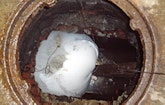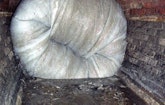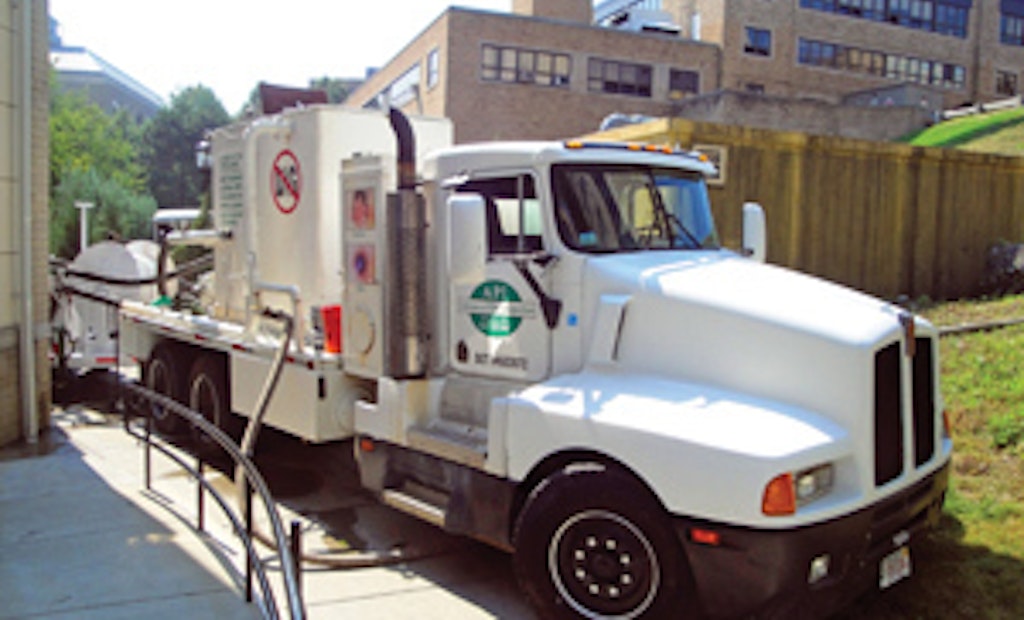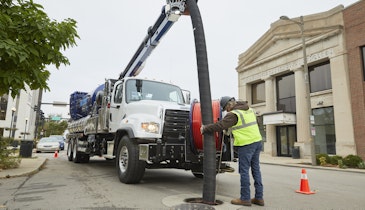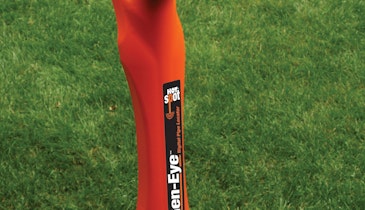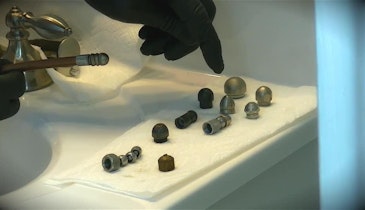Interested in Relining/Rehab?
Get Relining/Rehab articles, news and videos right in your inbox! Sign up now.
Relining/Rehab + Get AlertsStormwater running down the hills of Boston College Chestnut Hill campus in Newton, Mass., surcharged the brick storm sewer, flooding the entrance to the hockey arena and the lowest level of a parking garage. One episode even created a sinkhole.
The troublesome segment ran 706 feet under the arena, the adjoining football stadium, and the attached parking structure. A contractor inspecting the line found missing bricks and large sediment buildups. The pipe changed diameter three times, went from round to oval, and had two 45-degree bends and one at 15 degrees. The elevation dropped from five to 18 feet below grade.
The college wanted a solution that would not harm the modern sports complex or disturb athletes practicing in it. The project also had to be done before the homecoming football game in late August.
Jacob Murray, P.E., at Waterfield Design Group in Winchester, Mass., specified a structural cured-in-place liner. Joe Walsh of Advanced Pipe Inspection in Boston won the bid. He selected Liner Products in Paoli, Ind., to manufacture the felt liner. His crew installed it two days before the game and before the arrival of Hurricane Earl.
Limited access
The sewer had a 72-foot-long spot repair of 36-inch reinforced concrete pipe, two 27-foot lengths of 29- by 31-inch oval pipe with a manhole in the middle, and 578 feet of 36- by 38-inch oval pipe with a manhole at 383 feet. Although the line had six manholes, only three were accessible to equipment and vehicles.
Where possible, Walsh used a Vactor 2100 combination truck to clean the pipe, but mostly the crew did confined-space entries, working stooped over in the sewer or on hands and knees. They built a sled to drag the fallen brick to the manholes, where the truck vacuumed small rubble and a bucket lifted out large debris. “This was the hardest part of the job,” says Walsh. It took two weeks to clean the line.
A major challenge was measuring the pipe. “There could be no errors,” says Walsh. “Once we had the true circumferences, we made detailed measurements from the manholes to where the size transitions occurred and at what depths.”
It took five weeks for Liner Products to manufacture the one-piece, multi-layer liner. To remain structural, its thickness ranged from 18 to 20 mm as the depth of pipe increased. Meanwhile, Murray, who had no CIPP experience but was responsible for inspecting the installation, attended the NASSCO CIPP inspector training course.
The factory shipped the liner to Fast Pipe Lining in Bainbridge, N.Y., for impregnation with 40,000 pounds of catalyzed thermosetting styrene-based polyester resin. The crew vacuumed excess air from the liner, after which the internal conveyor system in Walsh’s 53-foot refrigerated tractor-trailer folded it. Workers coated each layer with ice to maintain a low temperature during the five-hour drive to Boston College.
Close quarters
Meanwhile, Walsh’s crew staged the equipment at the upstream manhole near the southeast corner of the hockey arena. They had just enough room on the double-wide sidewalk to park the 12-million-Btu boiler truck with hydraulic inversion platform and trailer-mounted 4-inch sound-attenuated pump from BakerCorp.
The crew extended the 20-foot-long tapered inversion sleeve down the middle of the platform tower and into the manhole. To force the liner around the three bends, they built cribbing in the manholes from 6- by 6-inch pressure-treated lumber.
The only place to park the refrigerator truck was a lot opposite the sidewalk on the other side of a 5-foot-high chain link fence and tall evergreen shrubs. The liner’s weight and size required an excavator to move it using a nylon choker. “The excavator pulled 20 or 30 feet of liner off the truck, swung it over the fence, we’d invert it, and repeat the process,” says Walsh.
Before the nose of the liner entered the inversion column, the crew sealed it with a two-piece metal plate and steel clamp, then attached a 1-inch hold-back rope to the plate to control the speed of inversion. They also attached two lengths of 4-inch vinyl lay-flat hose to the clamp. Dragged downstream within the liner, the hoses discharged hot water from the boiler truck during the curing process.
“Turning a larger-diameter liner at the base of the manhole is challenging,” says Walsh. “The liner wants to remain vertical and not invert to the horizontal, no matter the height of the water column.”
Workers in the manhole used ropes and a chainfall to lift and turn the liner. When inserted, a 2.5-inch hose connected to a hydrant poured 80 gpm into the liner from the top of the tower, creating enough hydraulic pressure to invert the liner and push it down the sewer. Workers stationed at manholes with the cribbing used radios to warn of the liner’s approach. Platform workers then reduced the flow of water to ease the liner slowly around the bend.
With half the liner inserted, the crew attached two 4-inch black discharge-recirculation hoses to operational glands in the liner. As the liner passed the four intermediate manholes, Walsh used a Fluke 52 series thermal reader (Fluke Corp.) to monitor its temperature and ensure that it was inflating properly.
Water, heat, action
Workers reduced the water flow as the liner approached the downstream manhole in the parking structure. A wooden chock helped prevent any further forward motion. The inversion took eight hours.
“We used the 4-inch high-volume pump on the boiler truck to draw water from the inversion sleeve and pushed it through the boiler,” says Walsh. “From there, it went to the BakerCorp unit to increase flow circulation as it forced the water through the lay-flat hoses to the far end of the liner, creating a closed-loop system.” The water was recirculated until the temperature reached 180 degrees F.
Because the air intake systems and floor drains from the hockey rink and football stadium could carry styrene odors and volatile organic compounds to the athletes in practice, Walsh added StyRedux capsules (Integrated Chemical and Equipment Corp.) to the water. The chemical polymerized the styrene in the resin and kept it from vaporizing into the air or escaping in the water.
The liner manufacturer recommended holding the temperature for six hours to cure the resin, but Walsh maintained it overnight for 13 hours to guarantee that the liner cured through its entire length. He then shut off the boiler, introduced cold water from the hydrant to the inversion sleeve, and allowed the hot water to escape slowly. The water recirculated until its temperature reached 100 degrees F, then was drained and the equipment was dismantled.
Personnel returning Thursday morning used air-powered chain saws and router cut-off tools to remove the cribbing, and reinstate the intermediate manholes and four catch basins. “We didn’t want gasoline fumes bothering our workers or the athletes and students as they prepared for Saturday’s big game,” says Walsh.
Lining the brick sewer eliminated friction loss and restored its full capacity. The college had no further flooding issues despite significant rains from Hurricane Earl.


